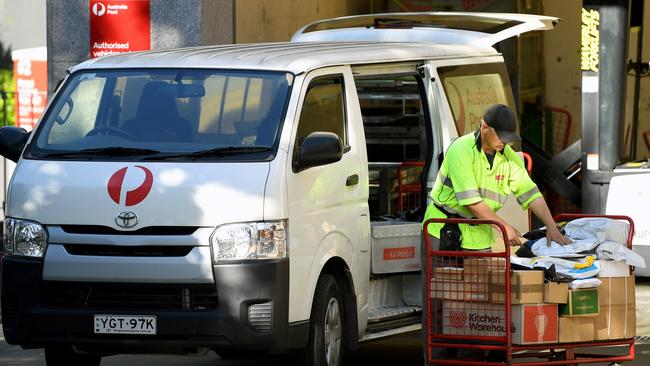Third-party access to Australia Post could save regional and rural customers hundreds of millions
Rural and regional Australians could save hundreds of millions of dollars if the Albanese government allowed third-party delivery companies to access Australia Post offices and drivers.

Rural and regional Australians could save hundreds of millions of dollars if the Albanese government allowed third-party delivery companies, such as FedEx, DHS and Team Global Express, to access Australia Post offices and drivers, a new report has found.
Under current regulations, third party delivery services are unable to use Australia Post’s so-called last mile delivery infrastructure, which includes everything from its distribution centres where posties pick up parcels, to licensed post offices and the vans and bikes parcels are delivered in.
While customers in cities can have their parcels dropped at nearby locations operated by the third parties, many regional customers do not have this option due to many towns having only one post office – run by Australia Post.
But a report by Lateral Economics commissioned by Team Global Express, formerly known as Toll Global Express, found access for third parties to the last mile infrastructure could deliver $1.5bn in economic benefits and create 2000 new jobs. A third of the benefit – or just over $500m – would go directly to Australian households through a reduction in delivery costs over 10 years.

“As an example, without access to the post office network, an out-of-home delivery by a third party provider to Charters Towers in Queensland will need to be dropped off at Ayr, which is 164km away and some two hours’ drive,” Lateral Economics’ Nicholas Gruen said. “A customer would have to embark on a four-hour roundtrip to collect their parcel. If third party providers were enabled to use the post office located within Charters Towers for their parcels, the customer’s journey could be reduced to less than 10 minutes.”

Former Australia Post chief executive and head of Team Global Express Christine Holgate said the move was vital after the dramatic rise of e-commerce prompted by Covid-19.
“Covid changed everything. Businesses had to close and their only way of surviving was to go online and … we saw the marketplace just absolutely transformed from an e-commerce perspective, much bigger and harder than anyone could have imagined,” she said.
The lack of access to last mile infrastructure meant either big out-of-pocket costs for regional customers needing to drive a long way for their parcels, or some e-commerce providers simply choosing not to offer delivery to anywhere outside the major cities.
“This is about giving people choice, both businesses and consumers,” she said. The move would also create more demand for posties and strengthen Australia Post’s financial viability, particularly in the bush.
“The post offices want it, the posties want to keep their jobs so they’re not opposed to carrying more, the consumers definitely want it, businesses want it, it will encourage rural and regional economic development, so they want it … There really aren’t any losers.”
In a survey commissioned by Team Global Express, more than 70 per cent of respondents said they wanted their local post office to be a central hub to receiving parcels from multiple companies.
The Lateral Economic Report, submitted to the federal government as part of its postal services modernisation discussion paper, said Australia Post was likely to lose some market share, but some losses could be outweighed by access licence fees. It recommended the government direct Australia Post to negotiate the commercial terms with its competitors.








To join the conversation, please log in. Don't have an account? Register
Join the conversation, you are commenting as Logout